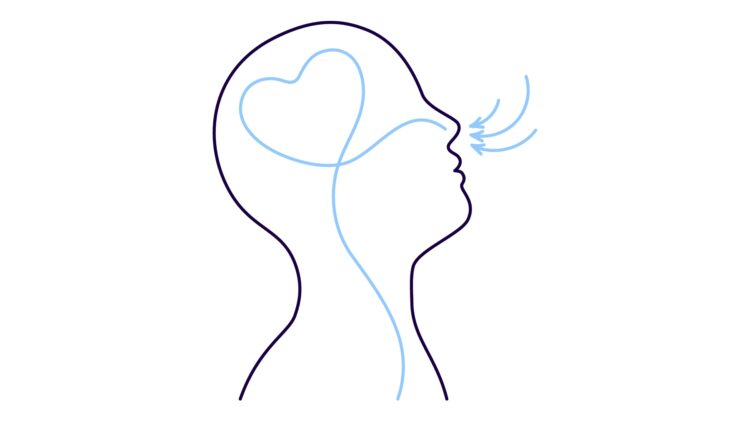Fingerprints have long been established as the most accurate biometric identifier along with your retina and tongue print, but while these are all quite unique (nothing is 100% accurate) there might be another means of identification that we have missed, and that is breathing. As ridiculous as it might seem that an action that we perform around 20,000 times a day is not just unique but enough to identify you, researchers from the Weizmann Institute of Science and the University of Haifa have discovered that breath could be, indeed, unique to one person.
These researchers found that everyone has their own distinctive way of breathing through the nose, like a personal rhythm or pattern that does not really change much over time and which could help identify a person with alarming accuracy. To figure this out, the team built a small, portable gadget that fits inside the nostrils and records airflow separately from each side for an entire day.
Despite the unorthodox test, nearly 100 volunteers wore the device while they went about their usual routines and even while they slept and by studying the air flow patterns, scientists could match each person to their own data with nearly 97% accuracy. These patterns are called “breathing curves” and they seem to be quite unique to each person regardless of their activity.
How breathing could become your new fingerprint
The researchers are calling this unique breathing pattern a “human nasal respiratory fingerprint” and they have found it fascinating how stable it is. While your heart rate, voice, or even face can change from moment to moment, your nasal breathing seems to hold steady for weeks or even months. Breathing patterns even seem to reflect brain activity. The nerve centers that control how we breathe are also involved in emotions, focus, and mental health.
The researchers noticed certain breathing characteristics lined up with things like anxiety or depressive symptoms, even in people who were not diagnosed with anything, and with the help of statistical models, they could even make reasonable predictions about whether someone might score higher on autism, anxiety, or depression scales just by analyzing their nasal airflow. For groups like young children, people with communication challenges, or the elderly, this kind of noninvasive insight could be groundbreaking.
One of the most eye-opening findings came when researchers compared breathing patterns during sleep versus while awake, because, even though the body changes its rhythm during different states of rest and activity, each person’s nasal pattern stayed pretty consistent. That means that using nasal breathing can be used as a way to detect sleep disorders or other health problems without invasive equipment or overnight lab visits.
If this technology is combined with new ways of analyzing information, like machine learning, it could eventually be part of a smart system that monitors your health in real time, needing no wires and causing no discomfort to users. And since the pattern remains stable for long stretches of time, it would not just provide a one-time snapshot but a reliable signal that reflects how you are doing physically and emotionally.
While this is still early research with a limited sample, the future looks promising, as breath could even be used as a form of ID in the future. Breathing can be tracked continuously, without a camera or direct contact and since it is invisible, effortless, and does not interrupt your daily life, it can be a quick and easy way to grant access to resources or locked places. The technology is nowhere near ready to be released, but its potential is massive. It could one day complement or even replace existing biometric systems in security or personalized medicine.

